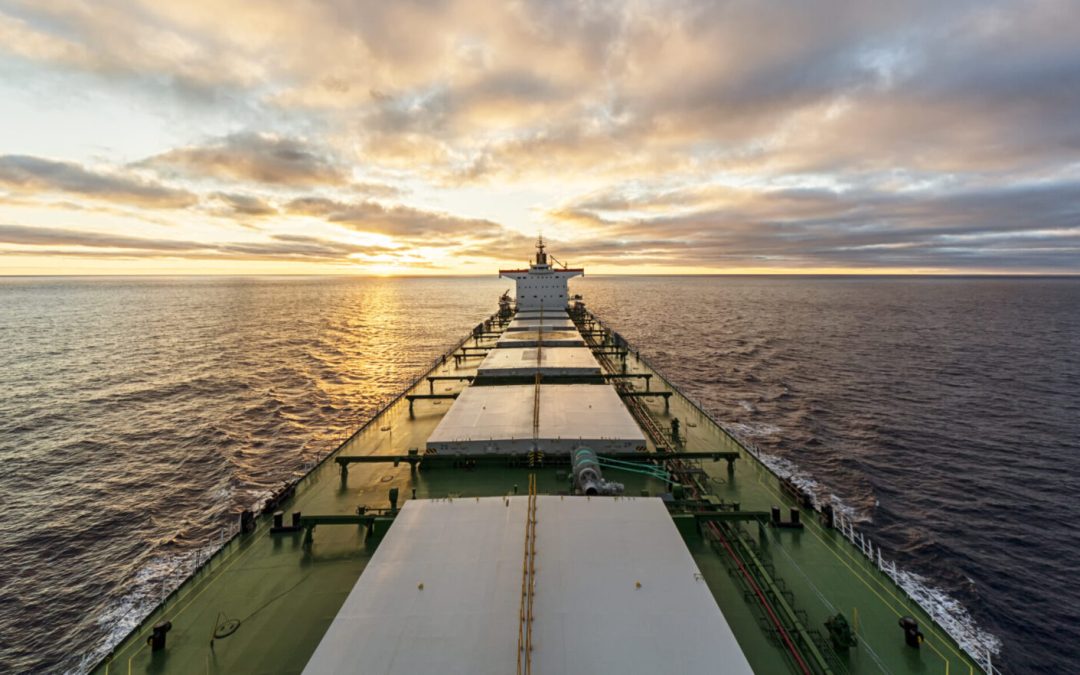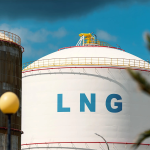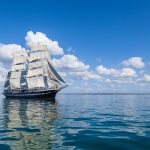As the incoming U.S. President Donald Trump’s announcement of a tariff bomb looms mid-month, the situation surrounding the impeachment of the President and Acting President makes it difficult for South Korea’s economy to see even one step ahead. Amid the chaotic conditions both inside and outside the country, South Korean corporations armed with the world’s best technology are challenging the global summit. Here, we take a look at the companies that shine a light on South Korea in the world.
On the 26th of last month, at the HD Hyundai Heavy Industries Ulsan Shipyard in Dong-gu, Ulsan, all 10 docks were filled with ships under construction. This yard can produce a maximum of 50 ships annually. In the largest dock, which is the size of nine soccer fields, four liquefied natural gas (LNG) and liquefied petroleum gas (LPG) carriers, measuring up to 300 meters in length, were being constructed simultaneously.
The engines that propel these ships and generate power are referred to as the heart of the ships. Upon entering the powerful engine plant 2 within the shipyard, dozens of HiMSEN Engines, weighing up to 90 tons and measuring 3.5 to 4 meters high, were lined up. The HiMSEN Engine is a medium-speed engine developed independently by HD Hyundai Heavy Industries after more than a decade of research and was first introduced in South Korea in 2000. While large engines drive the ships propellers, medium engines are responsible for electricity generation within the ships, equipped with generators at the end of the engine.
Typically, a single ship contains one large engine measuring 13 meters high and 3 to 6 medium engines for power generation.
Globally, only three countries (Finland, Germany, and Japan) with a development history of over 100 years have developed medium-speed engines like the HiMSEN Engine using their own technology. Success in independent development by a company like HD Hyundai Heavy Industries, which has a history of just over 20 years in engine development, and exporting to over 60 countries, achieving the world market share of 1 (about 35% for medium-speed engines), is regarded as an exceptional case.
Yu, Executive Director of the Quality and Planning Division at HD Hyundai Heavy Industries, noted, “Customers in the shipbuilding market are quite conservative, often using only engines produced by a few companies for a long time, making it difficult for new companies to enter the market even if they have technology, and even harder to build trust. We have secured customer trust by showing that ‘HD Hyundai Heavy Industries will resolve any issues regardless of the time and cost involved.’” Yu joined HD Hyundai Heavy Industries in 1994 and has served as a key leader in the engine machinery division.
On the day I visited the factory, several workers were climbing ladders to closely inspect the eight round connections between the elongated yellow pipes and the main body of the HiMSEN Engine. The yellow pipes supply gas fuel to the engine. Eliminating any gaps to prevent gas leakage is crucial.
Currently, 60% of the production volume of the HiMSEN Engine consists of dual fuel (DF) engines, which can simultaneously use traditional ship fuels like bunker oil as well as LNG and methanol, all of which can be selectively utilized. The dual fuel engines have established themselves as mainstream, accounting for 60 to 70% of the overall new ship construction market. Since they use different fuels in a single engine, a high level of technology is required and consequently, they are more expensive, leading to higher added value.
In 2008, HD Hyundai Heavy Industries embarked on the development of gas engines, which no one else had envisioned aside from diesel, and based on this experience, developed the dual fuel HiMSEN Engine that uses both diesel and LNG. To use LNG alongside bunker oil necessitates essential management technology for storing LNG in a liquefied state at ultra-low temperatures. In 2011, in collaboration with Germany’s MAN, which possesses large engine design technology, they became the first in the world to develop a dual fuel large engine using LNG. Large engines are produced by all shipbuilders under license agreements using technology developed by Germany’s MAN and Switzerland’s WinGD.
HD Hyundai Heavy Industries also holds about 35% market share in the global large engine market. Although they do not conduct direct design, they are evaluated as overwhelmingly competitive in terms of production volume and quality. HD Hyundai Heavy Industries produces about 300 large engines annually, while HD Hyundai Marine Engine produces around 80. This equates to producing one large engine per day. In contrast, 10 Chinese manufacturers combined produce approximately 700 units per year, with China still lacking in dual fuel large engine technology and experience. Hanwha Engine and Japan each have capacities of around 100 units.
Yu remarked, “Producing many units implies that we are selling many as well; we do not merely produce based on the blueprints provided by the original technology companies but engage in discussions to modify necessary aspects and have consistently led technological changes by swiftly reading the market.”
In October of last year, they became the first in the world to develop a high-pressure direct-injection HiMSEN ammonia dual fuel engine (H22CDF-LA). Previous ammonia engines used a low-pressure premixed method, mixing ammonia fuel with air and compressing it into the combustion chamber. In contrast, high-pressure direct injection sprays ammonia fuel into compressed air within the engine chamber at high pressure, enhancing engine output and fuel efficiency while reducing greenhouse gas emissions such as nitrogen oxides.
Ammonia, a compound of hydrogen and nitrogen, is flammable, posing a significant explosion risk if combustion goes awry, and high-pressure direct injection is technically challenging. HD Hyundai Heavy Industries optimized the timing of fuel injection while also redesigning related components to elevate ammonia combustion efficiency and ensure safe combustion. They also independently designed and developed the high-pressure fuel injection device. Yu stated, “Strengthening a series of safety devices that enable gas detection even in instances of leakage is a testament to our technical superiority.”
Most components of the HiMSEN Engine produced by HD Hyundai Heavy Industries are domestically sourced. They assemble the engine blocks, which are the engine bodies, by receiving module-shaped parts produced by their partners. The entire technology of the HiMSEN Engine, which produces engines over 5,000 horsepower, has been designated as a core national technology according to Article 9 of the Act on the Prevention of Industrial Technology Leakage and Protection.
The HiMSEN Engine is produced at three factories, with a total annual output of 1,000 units, of which approximately 600 units are made at the assembly and test site of the HiMSEN Engine plant 2 by around 300 workers. About 5 to 6 workers proceed with the assembly of the main body for 3 to 4 engines, completing engine manufacturing through piping. It takes about four weeks to make one engine, followed by a week of internal testing before the shipowner’s inspection takes place. The factory utilization rate exceeded 146% in the third quarter of last year, indicating that there was a high volume of work leading to significant overtime and night shifts.
The HiMSEN Engine is utilized not only for maritime applications but also for onshore power generation. In 2005, they supplied 588 land power generation facilities equipped with HiMSEN Engines throughout Cuba. Cuba even featured the HiMSEN engine land power station on the back of its 10 pesos bill with the phrase ‘Energy Revolution.’
Source: CHOSUNBIZ





